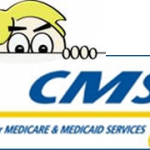 References: CR10001 – Medicare Claims Processing Manual – Pub 100-04 Chapter 12, Sections 50 and 140. https://www.cms.gov/Regulations-and-Guidance/Guidance/Manuals/downloads/clm104c12.pdf
References: CR10001 – Medicare Claims Processing Manual – Pub 100-04 Chapter 12, Sections 50 and 140. https://www.cms.gov/Regulations-and-Guidance/Guidance/Manuals/downloads/clm104c12.pdf
Effective May 15, 2017 CMS revises their manual to bring it in line with current payment policy for moderate sedation and other anesthesia services in light of the CPT changes for January 1, 2017.
Anesthesia services range in complexity from least to the most complex as follows:
- local or topical anesthesia,
- moderate (conscious) sedation,
- regional anesthesia and
- general anesthesia.
General Payment Rule:
The fee schedule amount for physician anesthesia services furnished is typically based on the allowable base and time units multiplied by an anesthesia conversion factor specific to the geographic locality and communicated to the MACs by means of the annual updates to the Healthcare Common Procedure Coding System (HCPCS) file. The base units and conversion factor are available at https://www.cms.gov/Center/Provider-Type/Anesthesiologists-Center.html
Moderate sedation is a drug induced depression of consciousness during which the patient responds purposefully to verbal commands, either alone or accompanied by light tactile stimulation but does not include minimal sedation, deep sedation or monitored anesthesia care. Practitioners are instructed to report the appropriate CPT and/or HCPCS code that accurately describes the moderate sedation services performed during a patient encounter, which are performed in conjunction with and in support of a procedural service, consistent with CPT™[1] guidance.
CPT codes 99143-99150 previously used for reporting moderate sedation were deleted from CPT 2017™ and replaced with;
| NEW
99151 |
Moderate sedation services provided by the same physician or other qualified health care professional performing the diagnostic or therapeutic service that the sedation supports, requiring the presence of an independent trained observer to assist in the monitoring of the patient’s level of consciousness and physiological status; initial 15 minutes of intraservice time, patient younger than 5 years of age |
| 99152 | initial 15 minutes of intraservice time, patient age 5 years or older |
|
99153 |
each additional 15 minutes intraservice time (List separately in addition to code for primary service) [Regardless of age of patient.] |
| 99155 | Moderate sedation services provided by a physician or other qualified health care professional other than the physician or other qualified health care professional performing the diagnostic or therapeutic service that the sedation supports; initial 15 minutes of intraservice time, patient younger than 5 years of age |
| 99156 | initial 15 minutes of intraservice time, patient age 5 years or older |
| 99157 | each additional 15 minutes intraservice time (List separately in addition to code for primary service) |
According to the AMA guidelines,
Preservice activities required for moderate sedation are included in the work described by each code 99151-99157 and are not reported separately.
Intraservice time:
- is used to determine the appropriate CPT code to report moderate sedation services:
- Begins at the administration of the sedating agent(s);
- Ends when the procedure is completed, the patient is stable for recovery status, and the physician or other qualified healthcare professional providing the sedation and personal continuous face-to-face time with the patient;
- Includes ordering and/or administering the initial and subsequent doses of sedating agents;
- Requires continuous face-to-face attendance of the physician or other qualified healthcare professional;
- Requires monitoring patient response to the sedating agents, including:
- Periodic assessment of the patient;
- Further administration of agent(s) as needed to maintain sedation; and
- Monitoring of oxygen saturation, heart rate, and blood pressure
Intraservice time of less than 10 minutes should NOT be reported.
If the physician or other qualified healthcare professional who provides the sedation services also performs the procedure supported by sedation (99151, 99152, 99153), the physician or other qualified healthcare professional will supervise and direct an independent trained observer who will assist in monitoring the patient’s level of consciousness and physiological status throughout the procedure.
An independent trained observer is defined as an individual who is qualified to monitor the patient during the procedure and who has no other duties during the procedure.
Postservice Work
The postservice activities required for moderate sedation are included in the work described by each code 99151-99157 and are not reported separately.
If the physician performing the medical or surgical procedure also provides a level of anesthesia lower in intensity than moderate or conscious sedation, such as a local or topical anesthesia, then the conscious sedation code should not be reported and no payment should be allowed by the A/B MAC (B). There is no CPT code for the performance of local anesthesia and as payment for this service is considered in the payment for the underlying medical or surgical service.
[1] CPT is a registered trademark of the American Medical Association, used with permission.